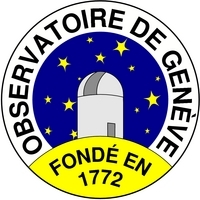
| INTEGRALPlanckGaiaPOLARCHEOPSEuclidATHENA |
| HEAVENSFACTCTALOFTSPICAJEM-EUSOXIPEeXTPTheseus |
| XRISMMAGBOUNDSMARTNet |
| ISDCCDCI |
| Data Centre for Astrophysics Astronomy Department of the University of Geneva |
A stacking method to study the gamma-ray emission of source samples based on the co-adding of Fermi LAT count maps
| Objects with low integrated gamma-ray fluxes that are not detected individually may become detectable when their corresponding count maps are added. This paper describes a method that can be used to analyze stacked data obtained with the Fermi Large Area Telescope. |
|---|
ABSTRACT
We present a stacking method that makes use of co-added maps of gamma-ray counts produced from data taken with the Fermi Large Area Telescope. Sources with low integrated gamma-ray fluxes that are not detected individually may become detectable when their corresponding count maps are added.
The combined data set is analyzed with a maximum likelihood method taking into account the contribution from point-like and diffuse background sources. For both simulated and real data, detection significance and integrated gamma-ray flux are investigated for different numbers of stacked sources using the public Fermi ScienceTools for analysis and data preparation.
The co-adding is done such that potential source signals add constructively, in contrast to the signals from background sources, which allows the stacked data to be described with simply structured models. We show, for different scenarios, that the stacking method can be used to increase the cumulative significance of a sample of sources and to characterize the corresponding gamma-ray emission. The method can, for instance, help to search for gamma-ray emission from galaxy clusters.
| by Ben Huber on 2012-09-13 | >> Fermi science results | >> All science results |







